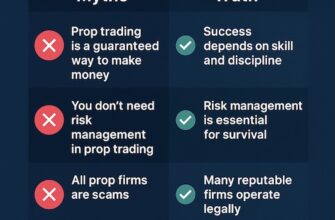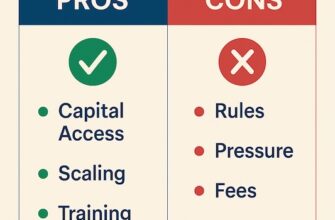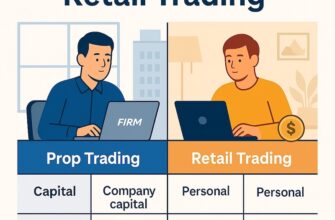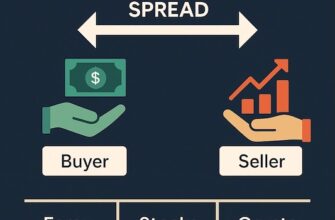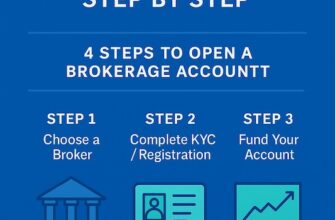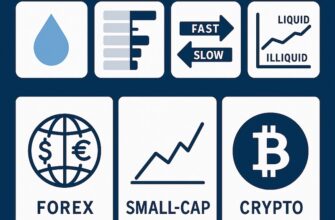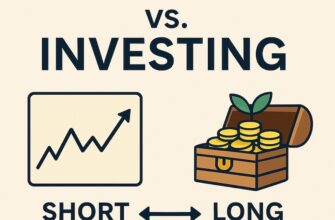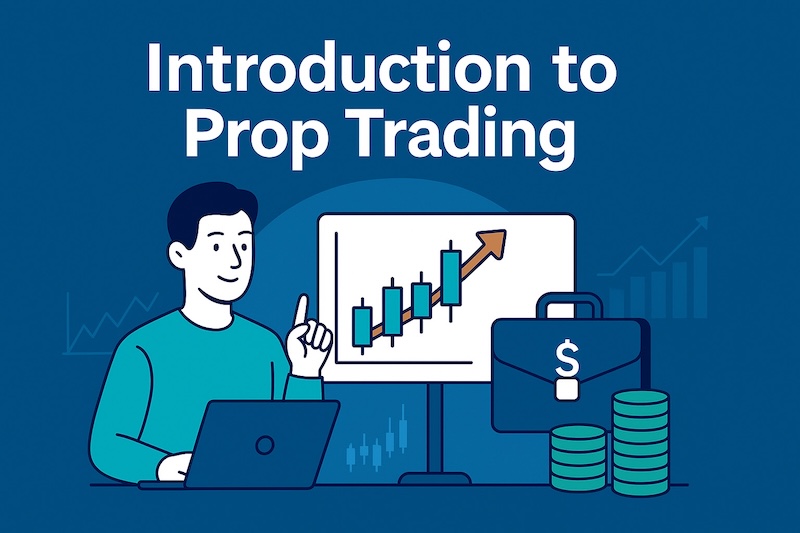
Trading takes many forms, but one model that has grown rapidly in recent years is proprietary trading, commonly called prop trading. Instead of risking only their own money, traders work with a company’s capital, follow specific rules, and share profits. This model creates both opportunities and challenges — and it is often misunderstood.
In this guide, we’ll explain what prop trading is, how it works, why it exists, and what beginners need to know before getting involved. Along the way, you’ll find links to in-depth articles on history, comparisons with retail trading, pros and cons, and common myths.
- What Is Prop Trading?
- Why Do Prop Firms Exist?
- Prop Trading vs Retail Trading
- Pros and Cons of Prop Trading
- ✅ Advantages
- ❌ Disadvantages
- Common Myths and Misconceptions
- How Prop Trading Works in Practice
- Application or Evaluation Phase
- Receiving a Funded Account
- Scaling Plans
- Ongoing Monitoring & Rules
- Life Cycle of a Prop Trader
- Skills Needed for Prop Trading
- Discipline
- Risk Management
- Psychological Control
- Adaptability
- Technical and Analytical Skills
- Beginner’s Roadmap to Prop Trading
- Step 1. Master Trading Basics
- Step 2. Understand the Prop Model
- Step 3. Test Yourself on Demo With Strict Rules
- Step 4. Prepare for a Prop Challenge
- Step 5. Pass Evaluation → Funded Account
- Step 6. Decide Long-Term Fit
- FAQ
- Conclusion
What Is Prop Trading?
Proprietary trading (prop trading) means trading financial instruments with a company’s own capital rather than customer funds. The firm provides access to money, tools, and infrastructure; the trader provides skill and discipline. Profits are usually shared according to a pre-defined agreement.
Key features of prop trading:
- Trader uses the firm’s funds, not (or not only) personal money.
- The firm sets risk rules (e.g., maximum daily loss).
- Profits are split (e.g., 70% to trader, 30% to firm).
- Often starts with a challenge or evaluation phase.
👉 Deeper dive: History and Evolution of Prop Trading
Why Do Prop Firms Exist?
Prop firms emerged because trading is capital-intensive, but many talented traders don’t have access to large amounts of money. Firms benefit by scaling good traders while controlling risk.
Benefits for the firm:
- Access to diverse strategies from multiple traders.
- Scalable revenue through profit-sharing.
- Reduced downside via strict risk controls.
Benefits for traders:
- Larger trading capital than personal savings.
- Structured environment with accountability.
- Community and sometimes training resources.
Prop Trading vs Retail Trading
| Aspect | Prop Trading | Retail Trading |
|---|---|---|
| Capital | Provided by the firm | Your own money |
| Risk rules | Strict, firm-defined | Self-defined |
| Profit split | Shared (e.g., 70/30) | 100% yours |
| Access | May require challenge/evaluation | Open to anyone with a broker account |
| Tools | Often advanced platforms, funded accounts | Dependent on what you can afford |
👉 More in: Prop Trading vs Retail Trading
Pros and Cons of Prop Trading
✅ Advantages
- Access to more capital.
- Limited personal financial risk (beyond fees, if any).
- Clear structure and discipline.
- Networking and trader community.
❌ Disadvantages
- Strict rules can be stressful.
- Evaluation fees or upfront costs.
- Profit splits reduce net gains.
- Pressure to perform under constraints.
👉 Full breakdown: Pros and Cons of Prop Trading
Common Myths and Misconceptions
Like many trading topics, prop trading has myths:
- “It’s easy money.” Reality: risk controls make it challenging.
- “All prop firms are scams.” Reality: some are, but many operate legitimately.
- “Only professionals can join.” Reality: many firms accept beginners with discipline.
👉 Read more: Common Myths and Misconceptions About Prop Trading
How Prop Trading Works in Practice
Prop trading isn’t just “trading with someone else’s money.” Most firms follow a structured process to evaluate, fund, and monitor traders. Here’s what actually happens:
Application or Evaluation Phase
Most modern prop firms don’t just hand over capital. Instead, they first test a trader’s ability.
- Evaluation model (most common):
- Trader pays a small challenge fee (like an exam ticket).
- The firm sets rules:
- Profit target (e.g., +8–10% in 1–2 months).
- Max daily loss (e.g., 5% of account balance).
- Overall drawdown limit (e.g., 10%).
- Consistency rules (avoid one “lucky” oversized trade).
- Passing requires reaching the profit goal without breaking any rules.
- Some firms require two steps (Phase 1 + Verification).
- Instant funding model (rare):
- Trader pays a larger fee upfront.
- Immediately receives a funded account but under stricter rules or smaller profit splits.
👉 Why it matters: This stage filters out undisciplined traders while protecting the firm’s capital.
Receiving a Funded Account
If you pass evaluation, the firm grants access to a live account with real capital.
- Typical starting size: $10,000 – $100,000.
- Trader can use this account to trade approved instruments (forex, indices, sometimes crypto or stocks).
- Risk rules from evaluation still apply (daily loss, overall drawdown).
- All trades are monitored in real-time by the firm’s software.
Profit split example:
- Trader earns $5,000 profit in a month.
- If the split is 80/20, trader keeps $4,000, firm gets $1,000.
- Payouts are usually monthly, some offer bi-weekly.
Scaling Plans
Many firms offer scaling opportunities for consistent traders.
- Example: If you make 10% profit in 3 months without breaking rules → account doubles (from $50k → $100k).
- Scaling continues in steps (some firms fund up to $1M+).
- This allows traders to grow their earnings without increasing personal risk.
Ongoing Monitoring & Rules
Prop traders work under constant risk supervision. Common rules include:
- Daily loss limit: If exceeded, account is suspended.
- Maximum position size: No oversized trades.
- No holding over weekends or major news events (varies by firm).
- Consistency requirements: Profits should not come from a single oversized trade.
Breaking a rule = losing your funded account (sometimes permanently).
Life Cycle of a Prop Trader
- Apply / Pay fee.
- Pass evaluation → prove discipline.
- Get funded account → trade real money.
- Share profits with the firm.
- If consistent → scale up to bigger accounts.
- If rules broken → lose account access, may reapply.
Skills Needed for Prop Trading
Prop trading is not just about “being good at trading.” It’s about thriving in a highly structured environment with strict rules and constant monitoring. Success requires a blend of technical skills, discipline, and psychological resilience.
Discipline
The single most important skill. Prop firms enforce strict daily loss limits and overall drawdowns. One mistake — and you can lose your funded account. Traders must:
- Stick to predefined risk per trade (1–2%).
- Stop trading after hitting a daily loss.
- Avoid impulsive “revenge trades.”
Risk Management
Risk is the language of prop firms. Good traders:
- Know their maximum risk per trade in dollars and % of capital.
- Size positions using formulas (lot sizing in forex, contracts in futures).
- Place stop-losses consistently, never “hoping” the market comes back.
- Track R-multiples (risk vs reward ratio) instead of just win/loss.
Psychological Control
Prop environments test emotional resilience. Imagine trading a $100k account where one bad decision could erase your progress. Needed skills:
- Patience to wait for valid setups.
- Ability to accept losses without frustration.
- Focus under pressure — especially when close to profit targets or max drawdown.
Adaptability
Markets change — what worked in a low-volatility environment may fail during news-driven spikes. Successful prop traders:
- Adjust position sizing when volatility increases.
- Avoid strategies that stop working instead of forcing them.
- Review trades regularly to adapt rules.
Technical and Analytical Skills
Prop trading firms expect traders to know the basics:
Keeping a trade journal for continuous improvement.
Reading charts and technical indicators.
Understanding market news and macroeconomic events.
Using platforms like MetaTrader, cTrader, or TradingView.
Beginner’s Roadmap to Prop Trading
Entering prop trading directly as a beginner can be overwhelming. Here’s a structured roadmap that builds the right skills before risking evaluation fees.
Step 1. Master Trading Basics
- Learn how financial markets work.
- Understand order types: market, limit, stop-loss.
- Practice on a demo account.
- Study risk management (never risk more than 1–2% per trade).
📖 Recommended reads:
Step 2. Understand the Prop Model
- Learn how prop firms operate (evaluation → funded account → scaling).
- Research their rules: profit targets, daily loss limits, consistency requirements.
- Compare prop trading vs retail trading to see if the model fits you.
📖 Related: Prop Trading vs Retail Trading
Step 3. Test Yourself on Demo With Strict Rules
Don’t wait for the firm to impose discipline — do it yourself:
- Simulate evaluation rules (daily loss, max drawdown).
- Track performance for 50–100 trades.
- Aim for positive expectancy (average win > average loss).
Step 4. Prepare for a Prop Challenge
- Start small (lowest account tier).
- Choose a firm with transparent rules and reputation.
- Stick to one strategy — don’t experiment during evaluation.
- Manage psychology: focus on following rules, not just hitting targets.
📖 Related: History and Evolution of Prop Trading
Step 5. Pass Evaluation → Funded Account
Once funded:
- Trade conservatively. Don’t chase quick payouts.
- Respect rules — they’re stricter than with retail trading.
- Build a track record for scaling opportunities.
Step 6. Decide Long-Term Fit
Prop trading isn’t for everyone. After some time:
- Ask yourself if the rules motivate you or stress you out.
- Compare potential income vs independence of retail trading.
- Decide whether to stay in prop, switch to retail, or combine both.
📖 Related: Pros and Cons of Prop Trading
FAQ
1. What does prop trading mean?
It means trading with a company’s capital under strict rules, splitting profits with the firm.
2. Do prop traders risk their own money?
Usually no — they risk company funds, though fees or deposits may apply.
3. How do prop trading challenges work?
Traders must meet profit targets while respecting loss limits. Passing leads to a funded account.
4. Is prop trading only for professionals?
No. Many firms accept beginners, but success requires discipline and risk control.
5. Is prop trading a scam?
Not inherently. Some firms are legitimate; others are poorly structured. Research is critical.
Conclusion
Prop trading is a fascinating model that opens doors for traders without large personal capital. It combines opportunity with structure: rules, evaluations, and profit-sharing. Understanding the history, differences from retail, pros and cons, and myths is essential before joining.
Use the guides in this section to deepen your knowledge and decide if prop trading is the right path for you.

